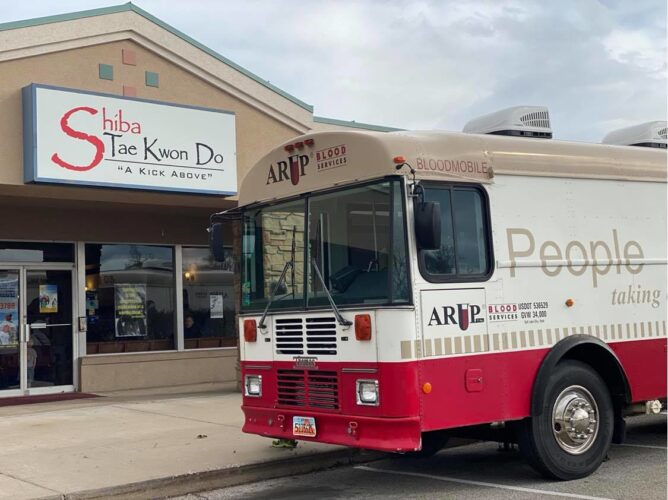Blood
Gay, bisexual men in Utah can give blood under company’s loosened restrictions
Photo supplied, Joelyn Nowlin
An ARUP Blood Services bus is parked outside the Shiba Taekwondo school in Clearfield in preparation for a blood drive held at the school in June 2020.
For the first time in four decades, gay and bisexual men will be allowed to donate blood in Utah.
During a press conference Wednesday afternoon, ARUP Blood Services made the announcement, making it the first donor center in the state to accept donations from the gay community.
In May, the Food and Drug Administration eased restrictions on the donor population. In the past, when people would show up to donate blood, they were asked specific questions about their sexual orientation. Any men who had sex with men were turned away and unable to donate. Now, when someone comes in to donate, they are not asked about their sexual orientation, and instead are asked the same questions that are asked of everyone else.
The screening will ask if a prospective donor has had multiple sexual partners in the last three months as well as whether or not they are taking pre-exposure prophylaxis or post-exposure prophylaxis. Treatment with these drugs could delay the detection of HIV.
“The queer community has been known to be inclusive, respectful and all about love, and our donors have the same values and qualities, so they really make the ideal donor to come in and donate with us,” said Dr. Waseem Anani, medical director at ARUP. “These are exciting changes to the guidelines that have historically impacted gay and bisexual men for four decades.”
Anani said the blood supply is “safer than it has ever been,” with improved testing and the ability to detect diseases like HIV.
Dr. Ryan Metcalf, section chief for transfusion medicine at University of Utah Health, said every day, someone in the state needs a blood transfusion.
“We are very excited about this and what it means for inclusivity,” Metcalf said. “We can’t always predict when a trauma is going to happen. We typically like to have a five-day supply. Today we’re low. We have a three-day supply and the shelf life for blood is quite short. Red blood cells are only good for 35 to 42 days and platelets are good for five to seven days.”
When the blood supply is low, Metcalf said, a collaboration between other centers come together to help each other.
“We need to keep up with the demand so we can take care of our patients as best we can, so I truly hope these changes will give us new donors and energize blood donations,” he said.
Dr. Christopher Valentine, medical director for Optum Health, said even though people are busy during the summer and holiday seasons, the demand for blood doesn’t change.
“It’s constant throughout the year and there are a lot of different reasons why people might need a transfusion,” he said. “Those include, of course, trauma and emergent situations, but there are also people with chronic blood loss from underlying issues, people undergoing cancer treatments, people who can’t produce enough of their own red blood cells and transplant recipients.”
Valentine said anyone 17 years or older can donate blood, and he encourages the older population to do so as well.
“It’s really great the public is being made aware of the changes in blood donations,” he said. “Donating blood, if you can, is extremely important and it’s also important to make sure you are prepared before you arrive to donate.”
Valentine said before giving blood, donors should be sure they’ve had a good night’s sleep, a healthy meal and plenty of fluids so they’re adequately hydrated. After donating, he added, get something to drink, relax for a few minutes and think about scheduling your next appointment.

